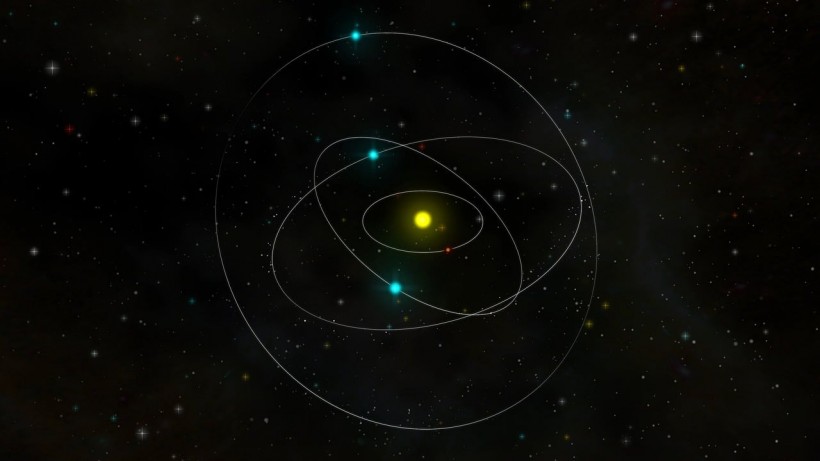A nearby planetary system, not far from the Solar System, boasts six exoplanets gracefully orbiting their star in flawless harmony. The bright star HD 110067 hosts these six exoplanets, each following an orbit precisely synchronized with its neighbors, forming a rare chain of resonance.
This alignment suggests the system has remained undisturbed since its formation over a billion years ago, making it an exceptional hidden treasure within the Milky Way.

NASA Finds Six 'Sub-Neptune' Exoplanets in an Extraordinary Celestial Symphony Around Their Star
Sub-Neptunian Waltz of the HD110067 System
A groundbreaking discovery by astronomer Rafael Luque and his University of Chicago team has revealed a captivating celestial spectacle: six planets engaged in a mesmerizing dance around a nearby star, moving in resonant orbits akin to a finely tuned cosmic clock.
These celestial bodies, categorized as "sub-Neptunes," occupy a unique size range that is larger than Earth yet smaller than Neptune and are widespread across the Universe, diverging from the composition of our own Solar System.
Initially appearing as an improbable occurrence, the HD110067 system mirrors the early phases of countless star systems. Analyzing data from NASA's Transiting Exoplanet Survey Satellite (TESS), the researchers observed periodic shadows crossing the nearby star.
They interpreted this as evidence of two planets on distinct orbits at first, but a more detailed investigation revealed a remarkable alteration in their orbital patterns. The puzzle was solved with the identification of a third planet through observations conducted by the ESA's CHEOPS satellite.
The breakthrough unfolded as the team recognized a chain of orbital resonances among the three planets. For every three orbits completed by the innermost planet, the next planet in the sequence would complete two orbits.
This rhythmic pattern continued, unveiling a celestial waltz characterized by precision and synchronization. The researchers concluded that the entire system has maintained this exquisite orbital harmony for an astonishing two to four billion years.
This revelation not only deepens our understanding of the early stages of planetary systems but also challenges preconceptions, emphasizing the prevalence of sub-Neptunes throughout the cosmos. The findings represent the culmination of meticulous observations and analyses, providing a glimpse into the intricate choreography of the universe.
HD 110067 System: A Billion-Year Resonant Gem for Exploration
Researchers noted in their study, titled "A resonant sextuplet of sub-Neptunes transiting the bright star HD 110067" published in the journal Nature, that the star system indicates an undisturbed history free from disruptive events from giant impacts or encounters from passing stars despite being formed over a billion years ago.
In contrast to certain planets in our Solar System suspected of migration, the HD 110067 system emerges as a rare gem boasting a genuine resonance chain, presenting an exclusive avenue for comprehensive investigation.
The current meticulous arrangement of planetary orbits within HD 110067 dismisses the likelihood of tumultuous events spanning its billion-year existence, establishing it as a valuable "fossil" for delving into migration mechanisms and protoplanetary disk properties within an untouched setting, as emphasized by the researchers.
Outlined in their published paper, the researchers underscore the system's potential for observation using the James Webb Space Telescope. With the host star's brightness and the prevalence of extended atmospheres in most planets, HD 110067 stands out as the most advantageous multiplanetary sub-Neptune system for transmission spectroscopy.
This presents an invaluable opportunity to unravel the enigma surrounding sub-Neptune planets and gain insights into the conditions conducive to the formation and endurance of resonant chains.
RELATED ARTICLE: Exoplanets Orbiting Distant Star Shown in Stunning 12-year Timelapse Video
Check out more news and information on Exoplanets in Science Times.














